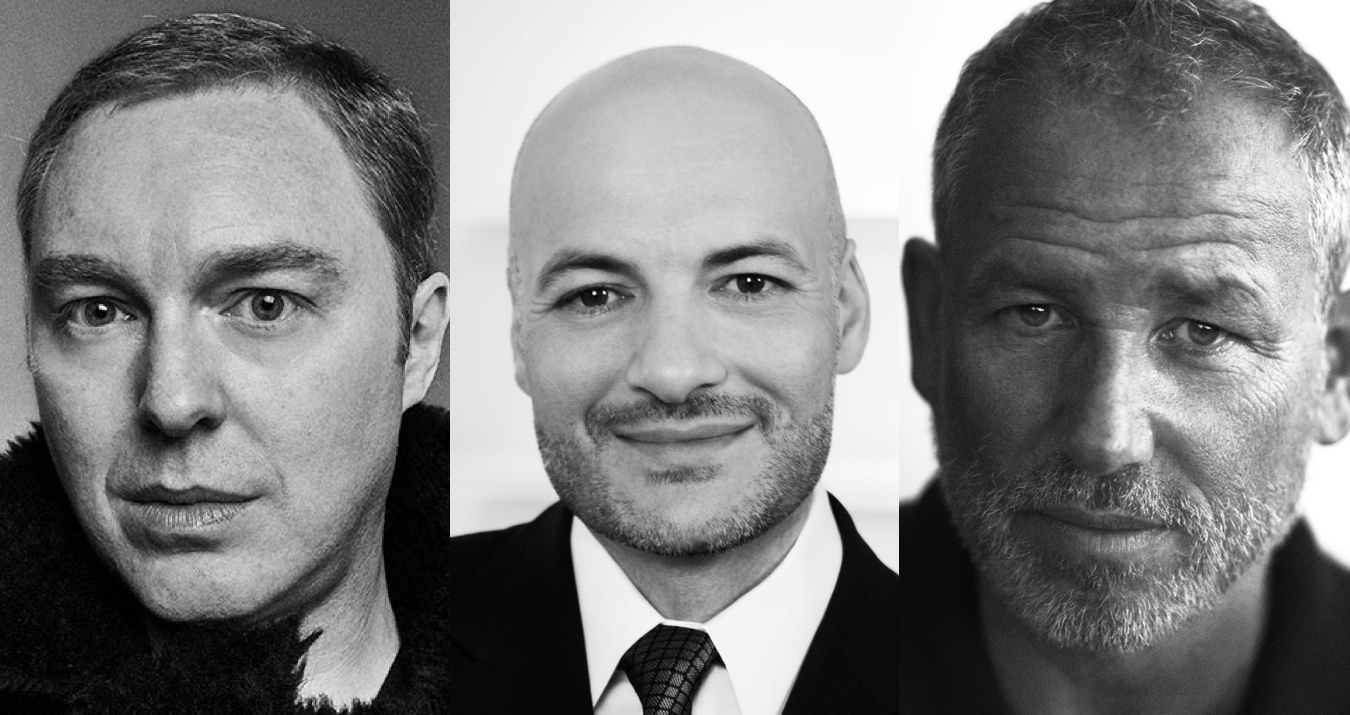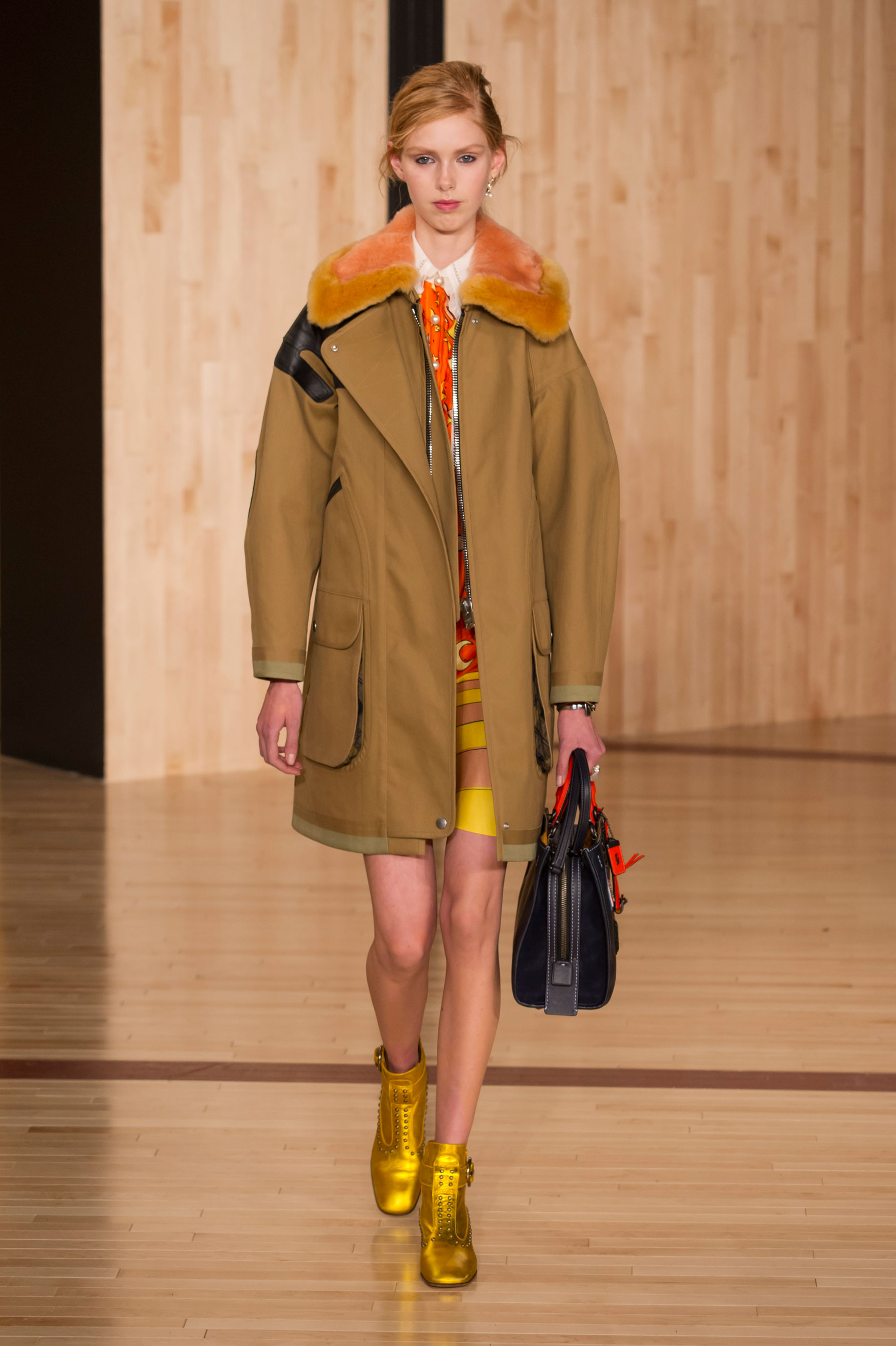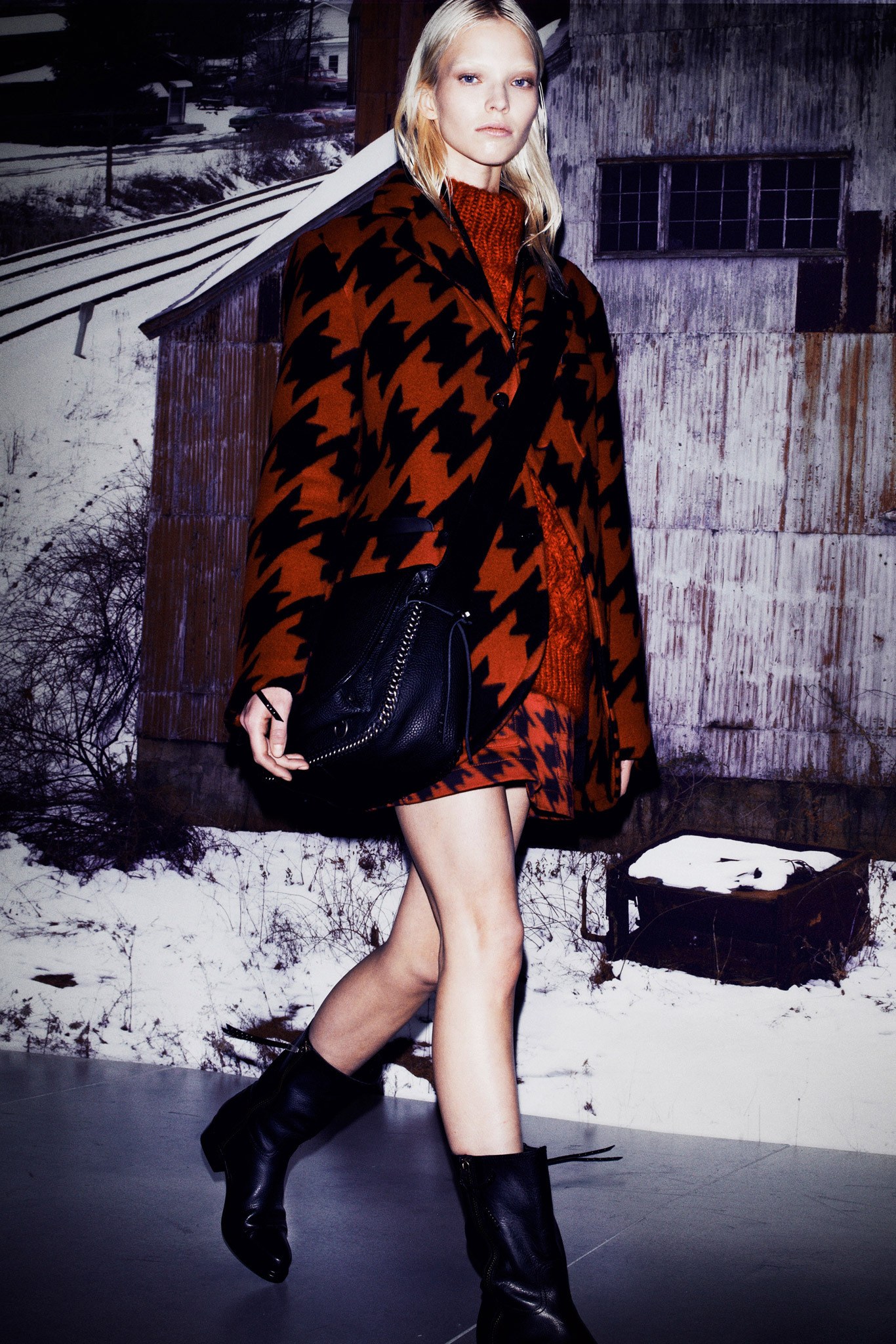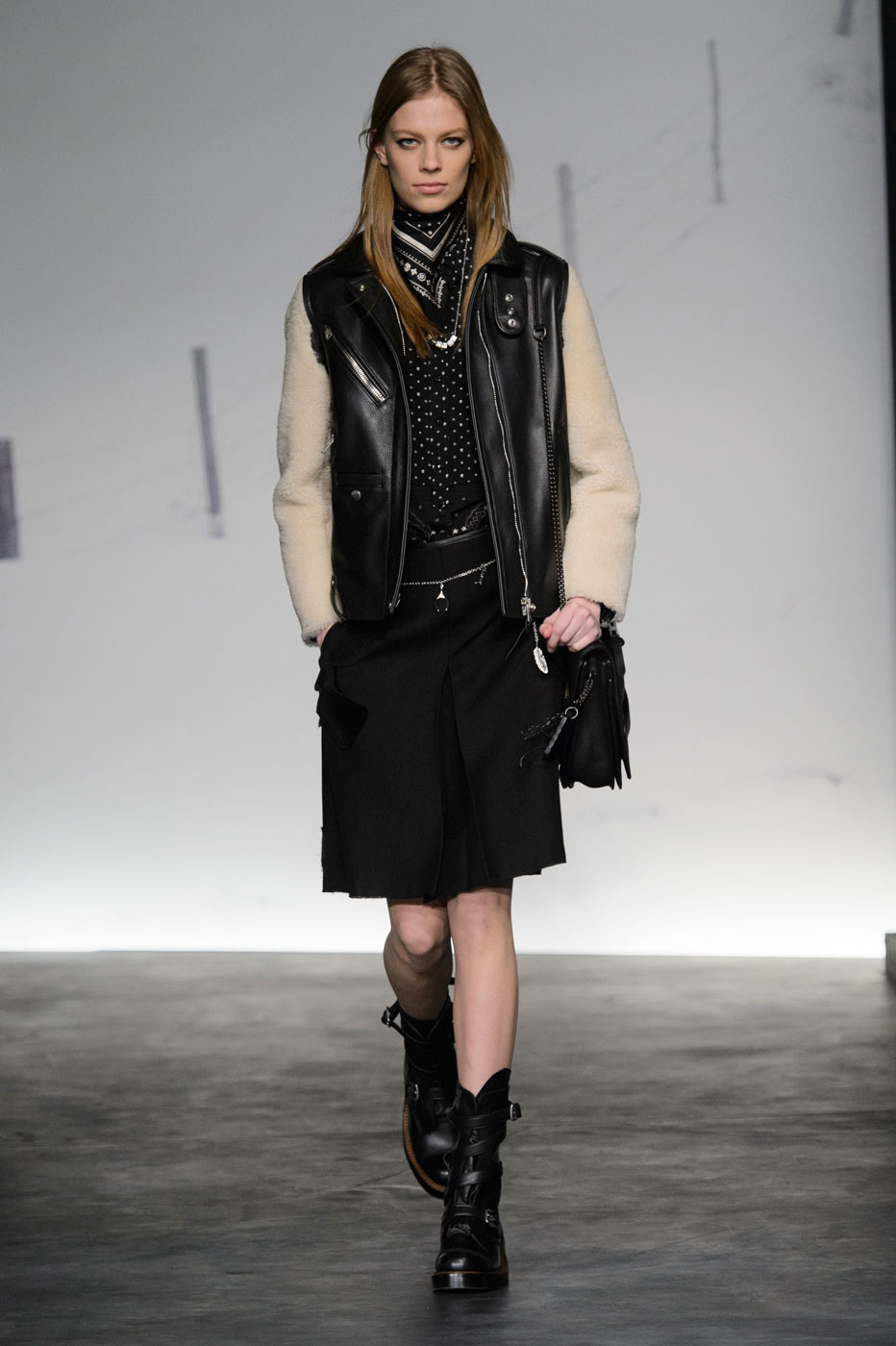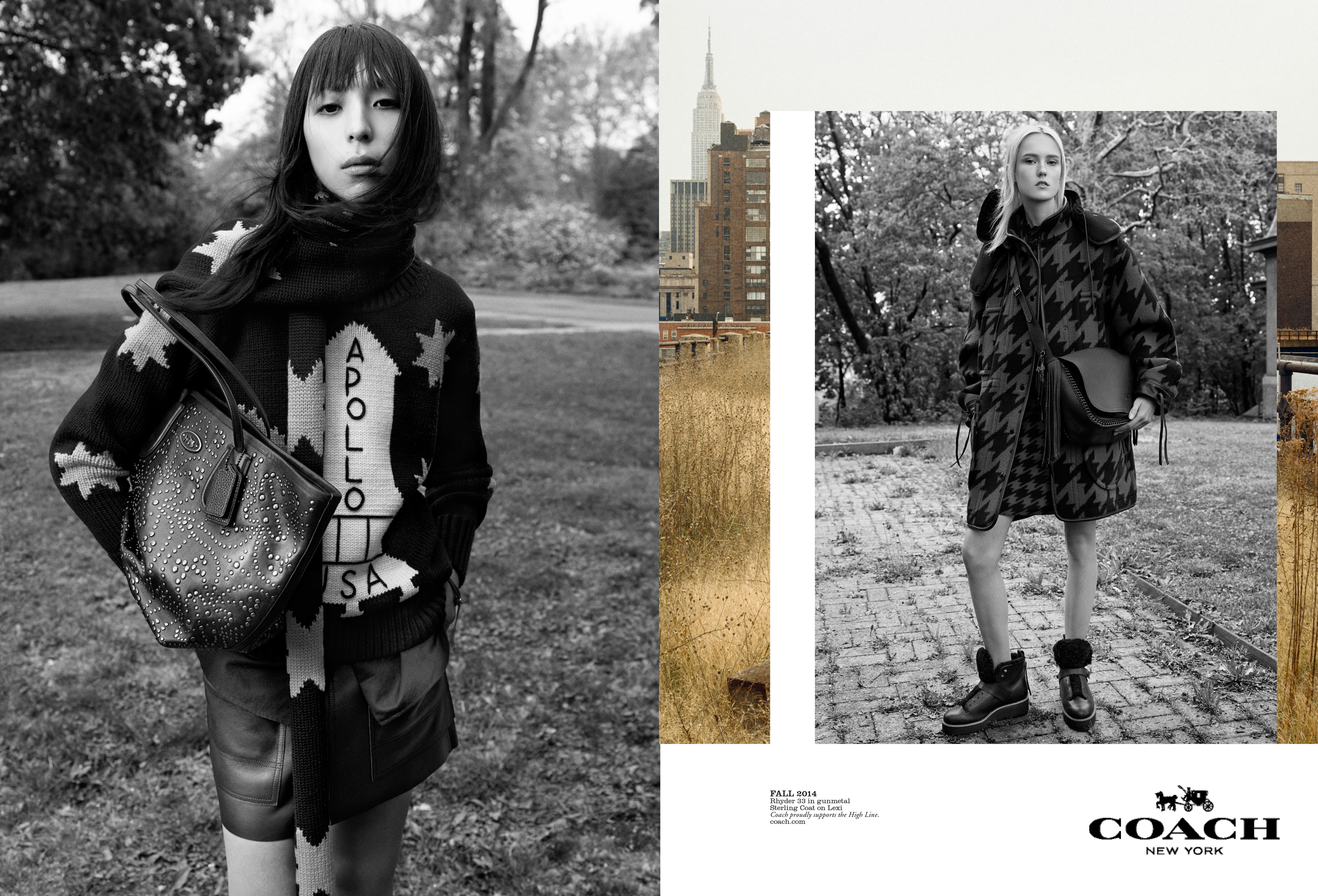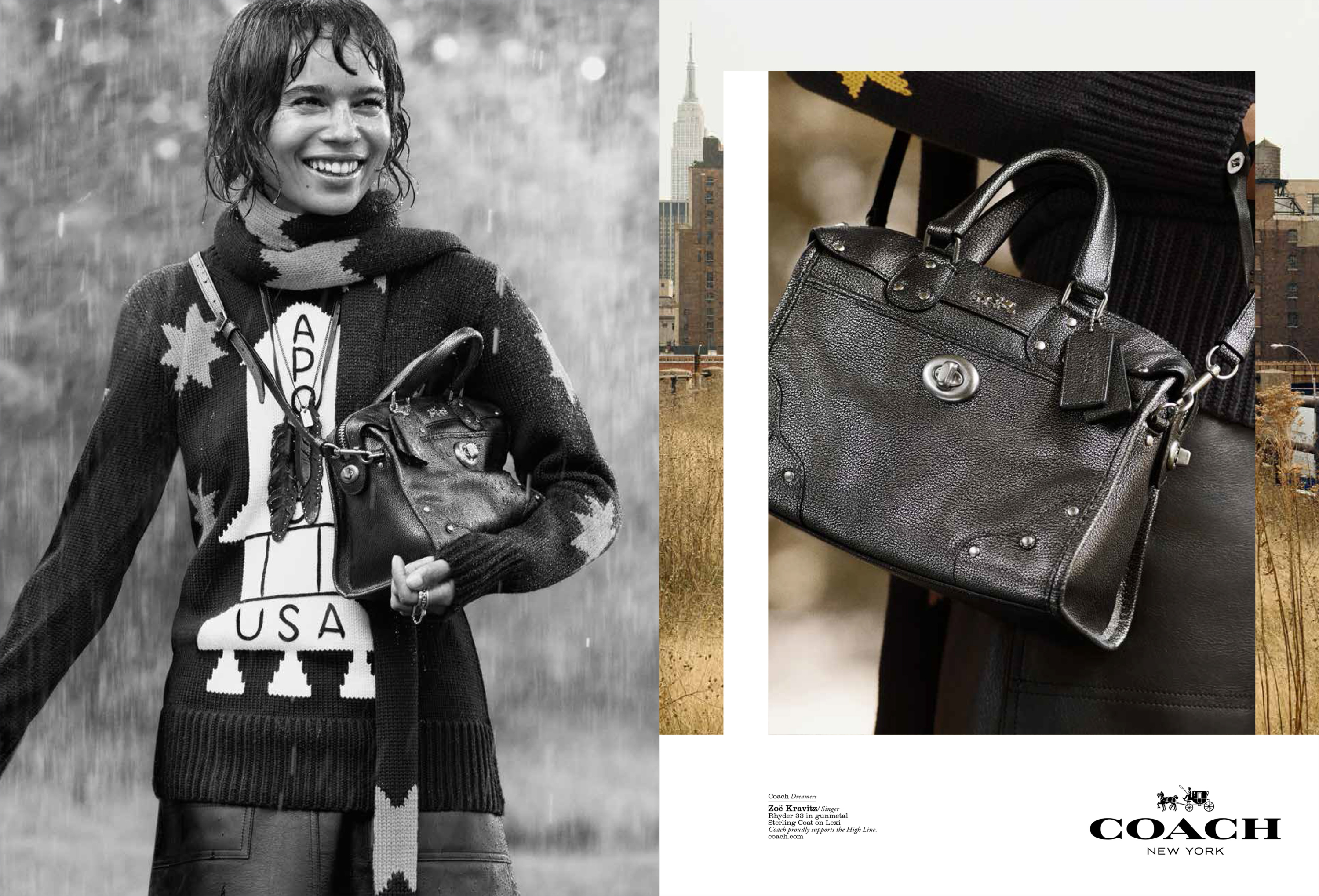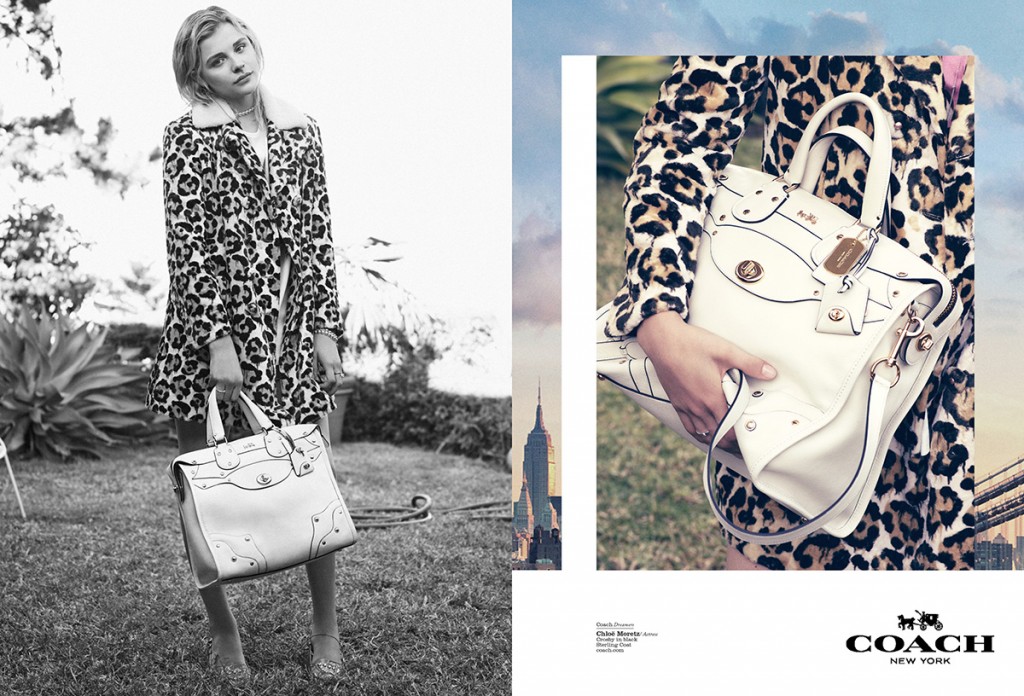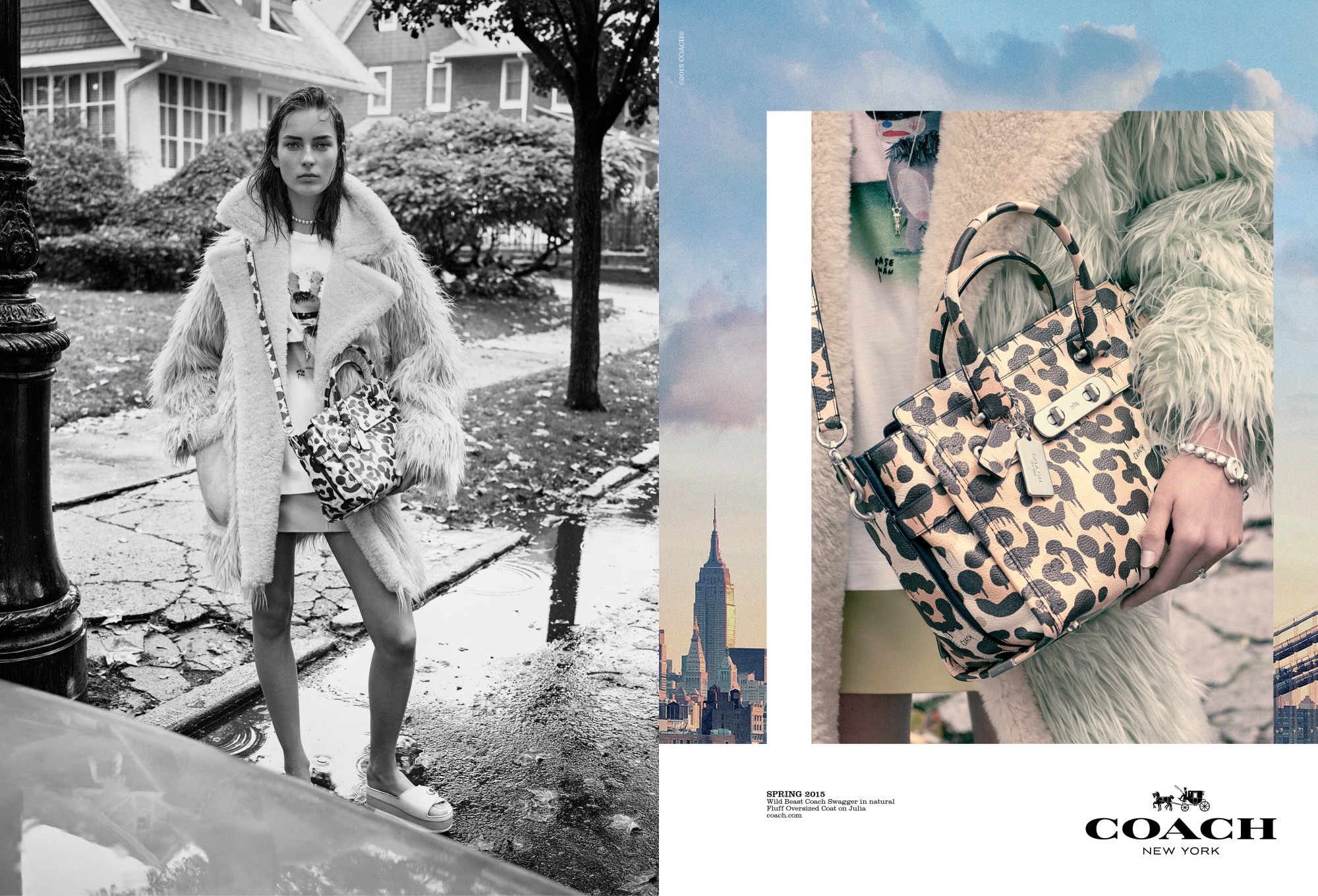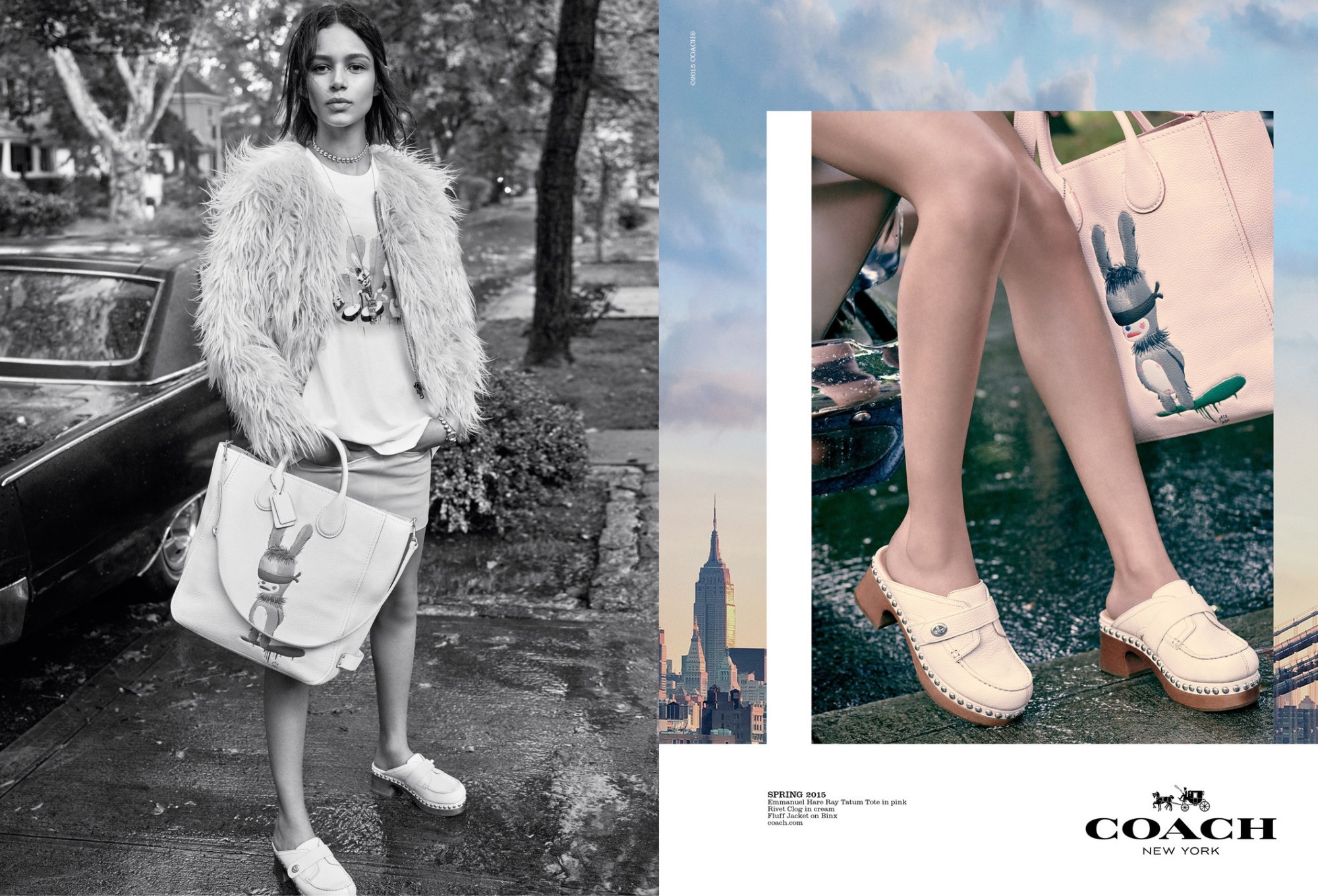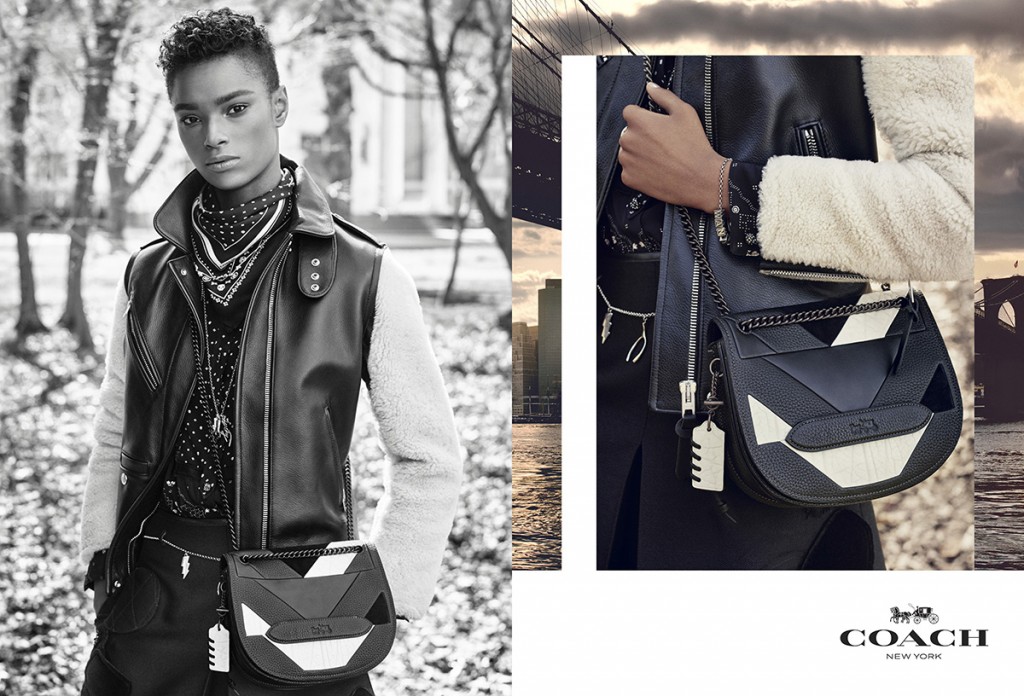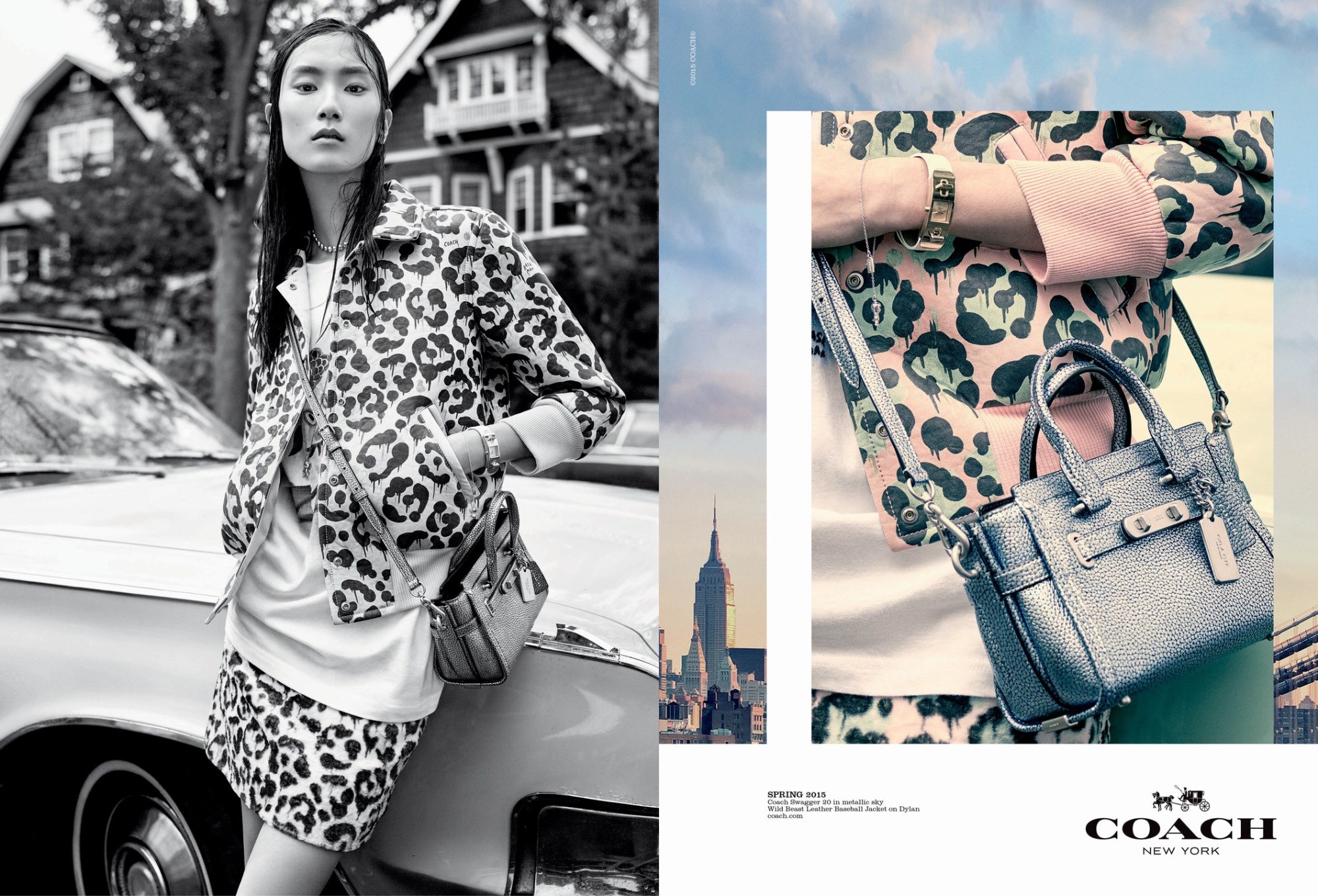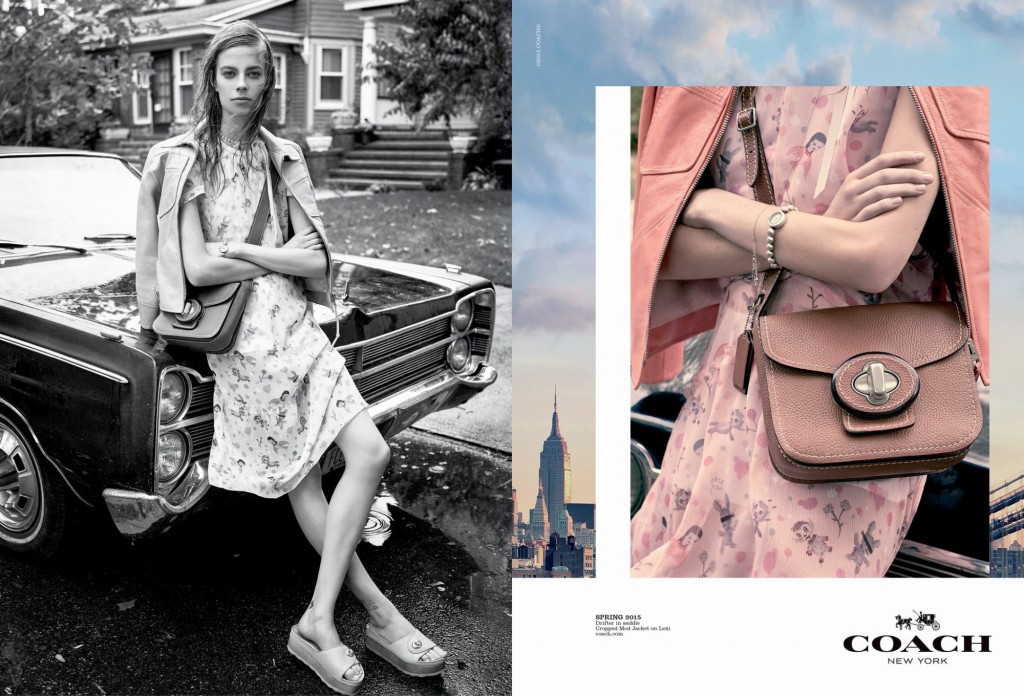For the past seventy-five years COACH has seen its fair share of changes, but none as transformative as their current fashion and global expansion. THE IMPRESSION sat with Coach’s CEO VICTOR LUIS and Creative Director STUART VEVERS along with BARON & BARON’S Creative Director FABIEN BARON to chat about how the trio came together, pressing the reset button, building a global campaign, and shifting from good to great.
BY KENNETH RICHARD
Congratulations on building one of fashion’s most dynamic teams and campaigns. How did the three of you come together?
VICTOR LUIS: In fact, it started with a telephone conversation with Rose Marie Bravo, who had worked with Fabien way back when on another brand’s campaign, and that prompted me to call him.
FABIEN BARON: Yes, I got a casual phone call from Victor a little bit before Stuart was there. We talked about Coach and what he wanted to do. How he wanted to change the company and take it to a new and different place. We basically discussed Coach in general, without making any promises that we may work together.
And then he called me up a little bit later and said, “If there would be a designer at Coach, who would that be?” I gave him Stuart’s name. He didn’t tell me anything, but he was apparently already in discussions with him. So that must have been a good vibe.
VICTOR LUIS: Once Stuart came in, we just talked about what should we do and he and I threw a bunch of names together and so we said, “Let’s meet people.”
STUART VEVERS: Fabien and I actually first met in the restaurant in the Chateau Marmont, but this was before we worked together. We were just introduced and chatted for a few minutes. I obviously knew of his work, which I’ve always found to feel very modern. I wanted to draw on that upon joining Coach.
It was really the idea that I wanted to do a complete reset and the idea of having someone have that hand was really appealing to me. But it was also because I knew I wanted to work with Karl Templer on first joining Coach; he was on the top of my list and I knew that Karl and Fabien have a working relationship. We started to talk about the campaign. As we were putting together the first collection, Karl said, “You know, you should go meet Fabien and talk,” and, essentially, that’s what I did. With anything like this, you’re curious, you’re unsure, and you’re exploring different options. I met with Fabien and the conversation was good, it was easy. I just left thinking I’d really like to work with Fabien on this.
VICTOR LUIS: Once he and Fabien met, I knew that there was magic because the relationship was such that there was trust. And for me, that was the key.

So what happened after that?
VICTOR LUIS: There was a lot of discussion around the language of the campaign and the idea of how to express this idea of what we had internally been calling the shop-within-the-shop, with New York as a background. There was also discussion about how we could make a statement that puts Coach right in the middle of the fashion conversation.
[quote text_size=”small” author=”- Victor Luis, CEO Coach”]
We realized that for the brand to evolve, we needed to have a ready-to-wear and a stronger fashion point of view that would bring our girl to the present and to the future.
It didn’t mean that we did not care about handbags or leather or history or DNA. On the contrary, I think what Stuart has tried to do is maintain that DNA, but interpret it in a very modern way and in a modern context. And so I think that the fashion piece was vital to bring the brand into the present and to provide a platform to express the brand more fully and for customers to engage with the brand in different ways, as well.
FABIEN BARON: I had a talk with Stuart and looked a little bit at what he was doing clothes-wise and I looked at his moodboard to see what the collection was going to be like.
We prepared a presentation and right before we were about to make it, Stuart invited me to see a small showing of the collection somewhere. And I get in and he has on the wall the pictures I was using! I said, “You must be kidding!” He had this huge blow-up of this American photographer, Joel Sternfeld. I look at him and said, “The presentation I’m about to make to you has these pictures!”
Joel Sternfeld is one of my favorite photographers. When I first came to New York, I followed him very closely and he has those amazing, amazing pictures of the High Line that were done in the 80’s, exquisite, with overgrown plants and everything. So Stuart says, “Yes, I know, I want to do something with that.” So I was like, “My God! We are thinking the exact same way.”
STUART VEVERS: A Joel Sternfeld photo was literally one of the very first images we were looking at as an inspiration for the collection. I had his book, “American Prospects,” with this one particular image that I was really obsessed with. I went into the office of the previous CEO of Coach, Lew Frankfort, who had on his table the Joel Sternfeld book about the High Line. And I was like, “Oh wow, that’s the same guy who I was referencing” and, you know Coach has already this strong connection with the High Line. I was walking to and from work on the High Line. It was that one of those things where you’re like, “This is kind of weird, but this is all starting to make sense.”
It was cool when Fabien heard this because then he got the idea of the mixing of the imagery. I was really sure that the imagery behind it had to be Sternfeld. Of course it took a lot of conversations with Sternfeld to agree that this was worth it, as those images were really precious to him.
FABIEN BARON: So I think Stuart and Victor were really happy then as I understood where they where going. I started sending over those early books that were my Bibles when I first moved to New York in the 80’s called New Color, New Work, with these younger photographers who were working with large format 8 x 10 cameras, doing negative film and prints. It was very interesting to see we were on the same vibe photography-wise.
VICTOR LUIS: They started talking about the content of what they wanted to do. There was a lot of discussion about who the photographer would be that could translate this well and so there were other players we talked about to gain the vision.
FABIEN BARON: We wanted to have a branded image that would be immediately recognizable even without the logo. The same way we did that for Burberry, the same way we did that for Calvin Klein, so it was very important for us to come up with recognizable branded visuals.
So when I presented the idea, it was the graphic language that was very specific but it was also the photography language, which to me were Joel Sternfeld and Steven Meisel and this is exactly what Stuart wanted as well. It was a no-brainer, basically.
STUART VEVERS: Steven was a crucial element. I actually shot all of my collections and all my campaigns when I was at Mulberry with Steven. So I knew him and knew his work. It was one of those things when I started working with him at Coach – and it was like, “Why did I ever not work with Steven?”
I knew I wanted to shoot new faces and fresh new girls, and the idea of being all about the new and the next and really looking forward. Of course Steven comes to mind when you’re thinking of that, and also he had never shot for Coach before and that felt kind of exciting.
Essentially, I just love his work. That first shoot and just seeing the girls and the collection and the puppy, it was really exciting, it really felt like a moment where it was coming together. I very much deliberately wanted a hint of nostalgia there. That was really important with our first campaign because I think people feel nostalgically about Coach. It was such a new direction; this felt very different for a lot people. I wanted to remind people about those good feelings of nostalgia around Coach, and yet there was a very new style for Coach in terms of the photography and what the collection was moving toward.
FABIEN BARON: I think Coach is a good mix of nostalgia meets novelty. There’s a mix of that, so when you look at it, you feel the familiar and yet you feel like, ‘Oh, it’s new.’ There’s something comfortable about it, there’s something reassuring when you see the images and when you see the product, where you feel like it’s coming from somewhere else and coming from somewhere tangible, there is a memory attached to it yet, when you look at it because of its color, because of the details, there is a lot of ‘new’ in the message.
So with the new campaign, Victor, when was the first time you got to see it?
VICTOR LUIS: Well, I got to see some – I think, less than a week after it was shot.
I think that Stuart and Fabien had some secret meetings where they looked at a few things. Then Fabien and Stuart, with Fabien’s team, came in and presented it to me. Of course until that point I had only seen a few pictures, with a girl, the mood and the backdrop. So I knew what the language was going to be in their live presentation.
STUART VEVERS: Fabien and I did a lot of things before we showed that to Victor. We had a lot of conversations and talked through things and Karl was very involved as well in the conversation. So we kind of worked through quite a few ideas, but I remember having a conversation with Victor that what we were going to present is going to feel very different, it’s going to be very bold. It kind of was like getting Victor ready, in a way.
VICTOR LUIS: It was a moment of goose bumps when I saw the actual presentation with the ready-to-wear, handbags, girl with all the right lighting, hair, makeup and setting. I knew it was the start of something.
I actually get more goose bumps now thinking back on it. The reason is that the first time you look at it, you may fall in love with it but yet you still don’t know what it means because you’re going in a new direction. And so today, I look back three seasons and I think about how far we’ve come not only in the evolution of the campaign, but also the impact that it’s had on our brand and business results. It’s hard not to be proud of the work. It took some courage. So, you know, it’s not hard for me to get sentimental.
A CEO’s support can make all the difference, especially in a sea of change.
STUART VEVERS: Victor’s always been really supportive.
[quote text_size=”small” author=”- Stuart Vevers, Creative Director Coach”]
I knew at the start that we were a complete reset. Essentially, he hired me on that concept – the idea that this was going to be a big change.
The really good thing about an interview process is you do meet people. I tend to think one of the main reasons Victor hired me was because of the ideas I was sharing with him of what I thought Coach could be. You do go through this process and at the end of the day, you’re making a pitch, and your pitch is what you would do and – you know, I turn it to work on my first day, and I essentially got on with what I said I would do in our conversation.
But it does take a CEO’s support to really get the media muscle behind it, right?
STUART VEVERS: Absolutely. Because at times you’re like, “I’m not sure. It’s too far.” And Victor’s been very supportive all the way through, to the point where Victor doesn’t come and see the collection before it’s shown. Because he’s said to me, “Well, I wouldn’t want to influence you in the wrong way. I wouldn’t want you to get nervous about something and influence you in that way.” I think that’s a great way of working; we’re partners. Sometimes we’re working very closely together and sometimes we’re doing very different things. We divide and conquer; we trust each other to do the things that we know are needed by our specialists.
VICTOR LUIS: The trust bit comes down to understanding your strengths and weaknesses, having self-confidence in what you bring to the table, understanding that it’s not about you. This isn’t about me and my title and my role as CEO. This is very much about the Coach brand.
And so I realized that in this moment and period of time that I have, as the CEO of Coach, several responsibilities to many constituencies. First, I have a responsibility to the brand, which is, in essence, the asset that I’ve been entrusted with, to develop it and to nurture it. It exists because we are in the business as a publicly traded company. It exists only if it also has financial health and the financial health I realize will be determined by the brand being loved, appreciated, desired, relevant and making a statement about the times that we live in. Having a point of view. Bringing individuals together who have a clear understanding of these modern times and having a point of view, I see, as my most important role.
Part of the success comes from having brought in Stuart, a new creative director, and from having brought in Fabien, the new director for the advertising campaign. So, we brought the whole new team around Stuart, at least as it relates to the campaign, knowing that we needed to make a change. If it were someone other than Steven shooting it, it wouldn’t have looked the same. If someone other than Fabien had directed it, it certainly wouldn’t have looked the same, and she would not be dressing the same way if it were not Karl Templer working with Stuart.
They did have a point of view, which developed a hit. Fabien, when did you know you had a hit?
FABIEN BARON: I think at the moment of the first presentation, when we were doing it. I said, “This is it. This is Coach, this is the new Coach!” I knew we had a hit even before, when I went to see Stuart at his first presentation. I knew we had a hit because I saw the clothes, I saw what he was doing and I said, “Man, he’s right on the money!” He’s right on the money every time I see a new collection coming out every season. He’s doing it the right way. This is going to be like Burberry, we’re going to go through the roof.
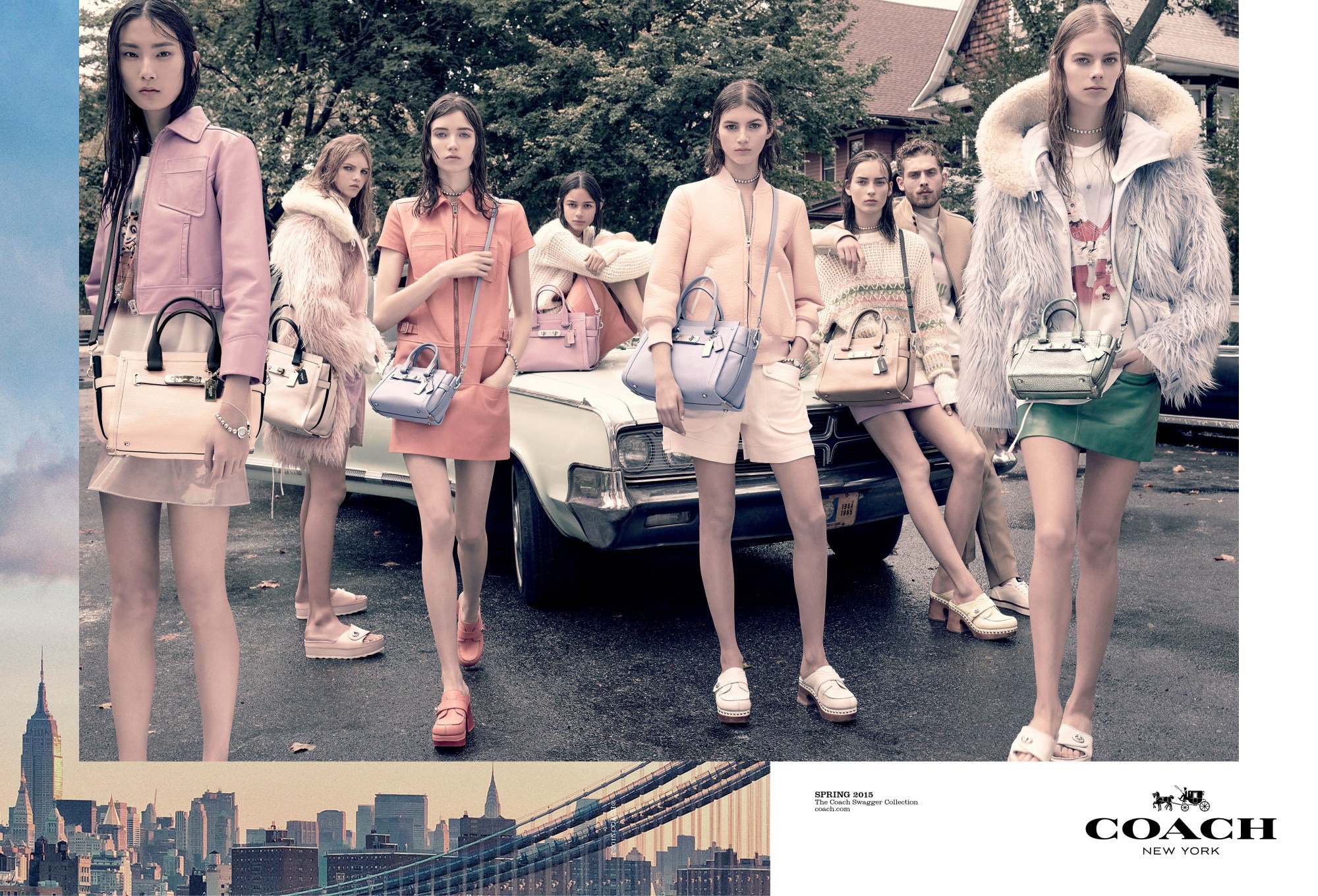
What happened next?
VICTOR LUIS: What happened next was hundreds of people telling me how much they loved it, others telling me how it worked, a bunch telling me I was crazy. I think the key piece for me was belief in= the vision, and, quite frankly, trust in the creative minds that were leading. The worst thing I could have done was to question. We had a dreamer’s campaign with some celebrities on the side with the same language, which went really well, but the core vision of the fashion campaign has never changed. It has continued to evolve and yet remains very, very consistent. And, if anything, what’s been beautiful about it is we’ve kind of even pulled back a little bit on the other bits of it and just let that speak for itself.
STUART VEVERS: I think that was one of the first ideas the three of us talked about. It was the idea that it would be very immediate, like you could see this ad on a single page, on a billboard, in a newspaper, online, and you could get the sense of this visualized entity and you didn’t have to see the logo to know the brand.
Obviously one of the things we talked about when we did that was to make it identifiable, you have to repeat; you have to keep doing it.
FABIEN BARON: What I love about Stuart is that he’s very, very clear with what he wants and he’s very consistent with what he wants. He has one point. He has one bullet and he wants to make sure that bullet goes in the center of the target. I’m the same and I believe Victor is the same and I believe Karl Templer is the same and I believe Steven Meisel is the same and the entire team is very similar. We all want the consistency; consistency is extremely important.
The problem with fashion today is it’s too flaky and it’s changing too often. The point of view is just too fickle and disappears and changes and goes left, right, center.
[quote text_size=”small” author=”- Fabien Baron, Creative Director Baron+Baron”]
The brands that are very precise with what they want, win. You need to be consistent, you need to have a viewpoint and make your point over, and over, and over, and over.
We look forward to the new iterations of that viewpoint. Thank you all for taking the time today and good luck with the upcoming collection and campaign.
STUART VEVERS: My pleasure, it was really fun.
VICTOR LUIS: Look forward to continue to follow your magazine. I love it.
FABIEN BARON: And thank you, I appreciate it.
[hr align=”center” style=”striped”]
